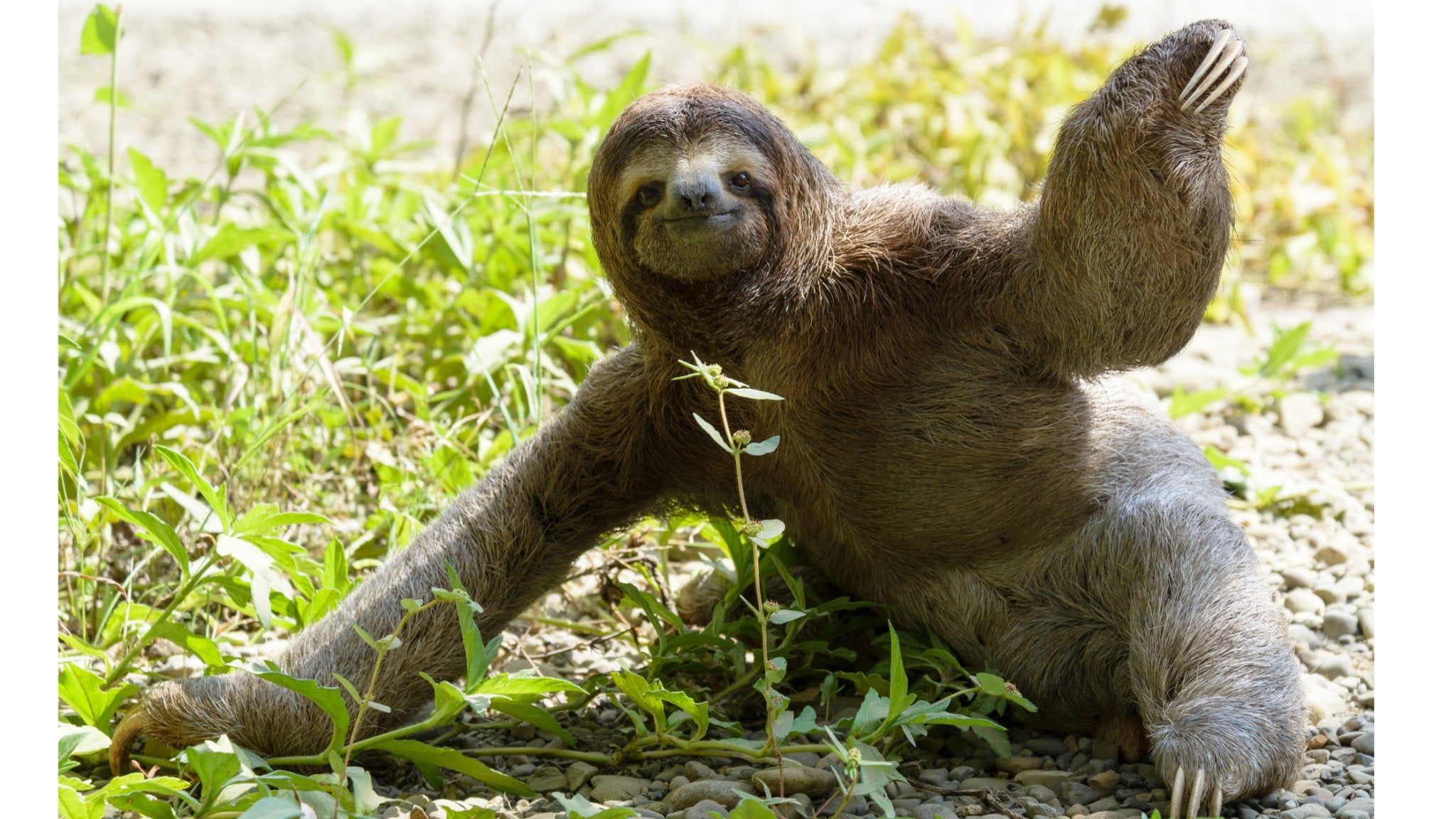Celebrating one of the slowest animals around…October 20th is International Sloth Day!
What is International Sloth Day?
International Sloth Day was started in 2010 by the AIUNAU Foundation to bring awareness to the life cycles and natural habitat of the sloth. The foundation also works to conserve the habitats of sloths and rehabilitate them to return them to their tree-top homes.
These amazing mammals spend most of their time snoozing in the trees. They can sleep for 15-20 hours a day! Talk about getting some “nap time!”

The reason sloths can sleep so much is because they have a super slow metabolism. Metabolism is a term for the chemical reactions in your body that help keep you alive. It’s the process that changes food into energy. In fact, they got their name from the word sloth which means "slow."

Sloths digest the food they eat, mainly leaves and twigs, extremely slowly. A sloth’s stomach has four chambers in it, and it can take them up to a month to process that big vegetarian meal!
Sloths are tree-dwellers. They spend all of their time in trees, only descending to go to the bathroom…once a week! Or to move to a new location.

Their long arms are well-adapted for hanging out in the trees all day and their limbs are perfect for hanging and grasping. The ends of their paws are like hooks and they have super-long claws.
While their long limbs are useful for moving around through tree tops and climbing around on vines, they’re not very good for defense. A sloth's protection from predators comes from camouflage.

Their thick, soft fur grows in two layers. Algae and fungus grow on their fur and turns it a bit green. This aides in helping the lethargic creatures blend in to their surroundings. Bugs also call a sloth’s fur “home” which helps with the blending in, also! Eew!
A sloth, curled up and sleeping in the fork of a tree, can resemble a clump of leaves! That’s some pretty good camouflage when you’re not too quick.
Swimming Sloths!
Another thing their long limbs are good for is swimming. They are really good swimmers and can even hold their breath underwater for up to 40 whole minutes! Can you imagine holding your breath for almost an hour?
Their territories aren’t very big, but they do move about. If they come down out of the trees and a body of water is close by, they’ll often use that as a shortcut and go for a swim.
Sometimes, though, humans introduce a road through the sloth's territory. Since a slow-moving sloth can't cross the road quickly, vehicles become a danger to these peaceful creatures.
To help the sloths, conservation groups install canopy bridges to give the animals a safe path across busy roads and highways.
How Many Toes Does That Sloth Have?
There are two kinds of sloths, and each kind has its own sub-group.
The two-toed sloths have two species:
- Linnaeus’s two-toed sloth, which can be found in the upper parts of South America and
Central America. They live in places like Venezuela, Columbia, Ecuador, Peru and Brazil’s Amazon rain forest.
- Hoffman’s two-towed sloth can be found on either side of the Andes Mountains. Places like Honduras and Bolivia. They also live in parts of Ecuador and Brazil.
The three-toed sloths have four species:
- The brown-throated three-toed sloth is the most common to be found. They live in the forests of Central and South America.
- The pale-throated three-toed sloth makes its home in northern South America.

- The maned three-toed sloth can only be found in the forests of eastern Brazil. It’s named for its long mane of fur running down its back and shoulders.

- And last but not least, there is the pygmy three-toed sloth. The only place these little guys are found is on the small island of Isla Escudo de Veraguas off the coast of Panama.
Fun Facts About Sloths
You've learned sloths can sleep most of the day away, and they can hold their breath for a seriously long time. Here’s some other cool things about these neat creatures…
Sloths don’t have incisors. Those are the teeth that most mammals have to take bites out of food. People have incisors. That’s what the teeth in between the canine teeth are called. Sloths eat by using their lips to trim food down. They have some serious lips.
Sloths look like monkeys or bears, but they are actually related more closely to…armadillos and anteaters! They come from a scientific family called Xenarthra.
Sloths all have three toes on their back paws, but the difference with the two-toed variety is they only have two digits on their front paws.
They rely on their sense of touch for most things. The reason? They don’t have very good eyesight or hearing.
They’re slow…really s-l-o-w. In fact, the three-toed sloth is officially the slowest mammal on the planet. But being so sluggish is actually a benefit for them. Moving so slowly, they often go unnoticed by predators.
Two-toed sloths are mostly nocturnal, with most of their activity happening at night. Three-toed sloths will go out and about during the daylight, though.
Three-toed sloths can rotate their heads 270 degrees. That’s almost turning their head completely around! The reason is they have a couple extra vertebrae in their necks which allow for extra movement.
For being pretty slow and not seeing very well, they live a really long time for wild animals. The average is about 20-30 years, but sloths in places like zoos can live even longer.
So, celebrate the adorable sloth on International Sloth Day. Maybe… hang out or go take a nap? Then have a delicious vegetarian dinner from eat2explore!








